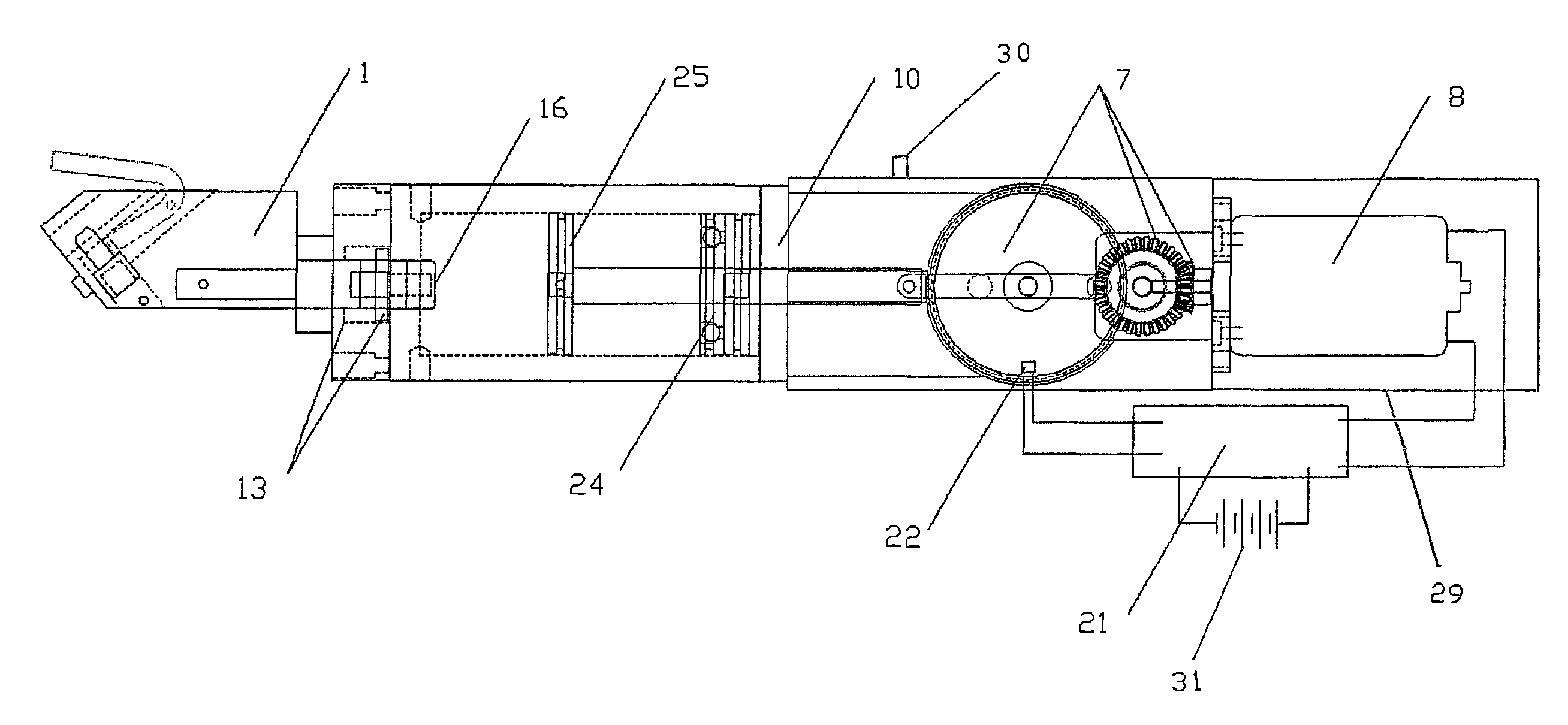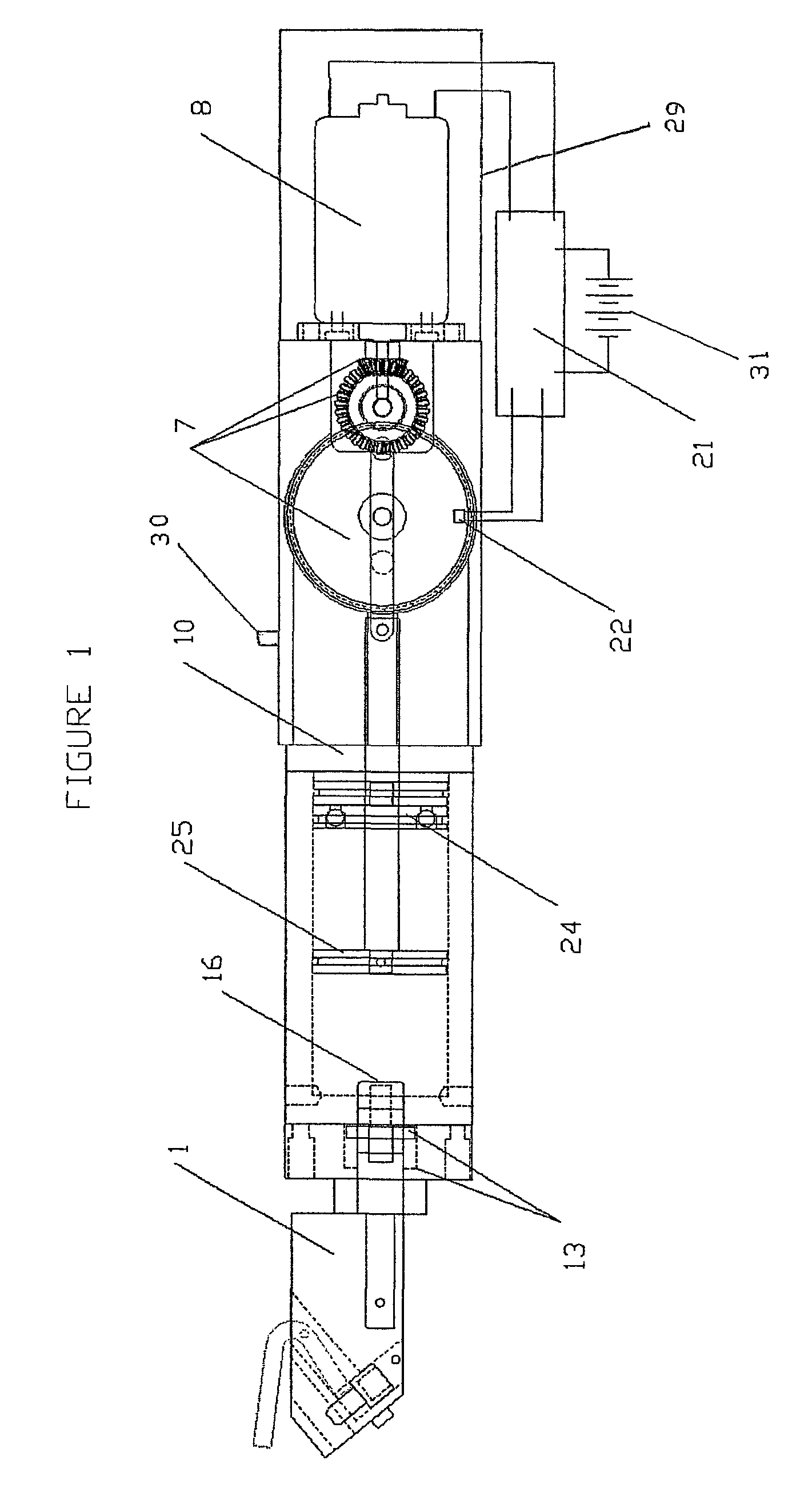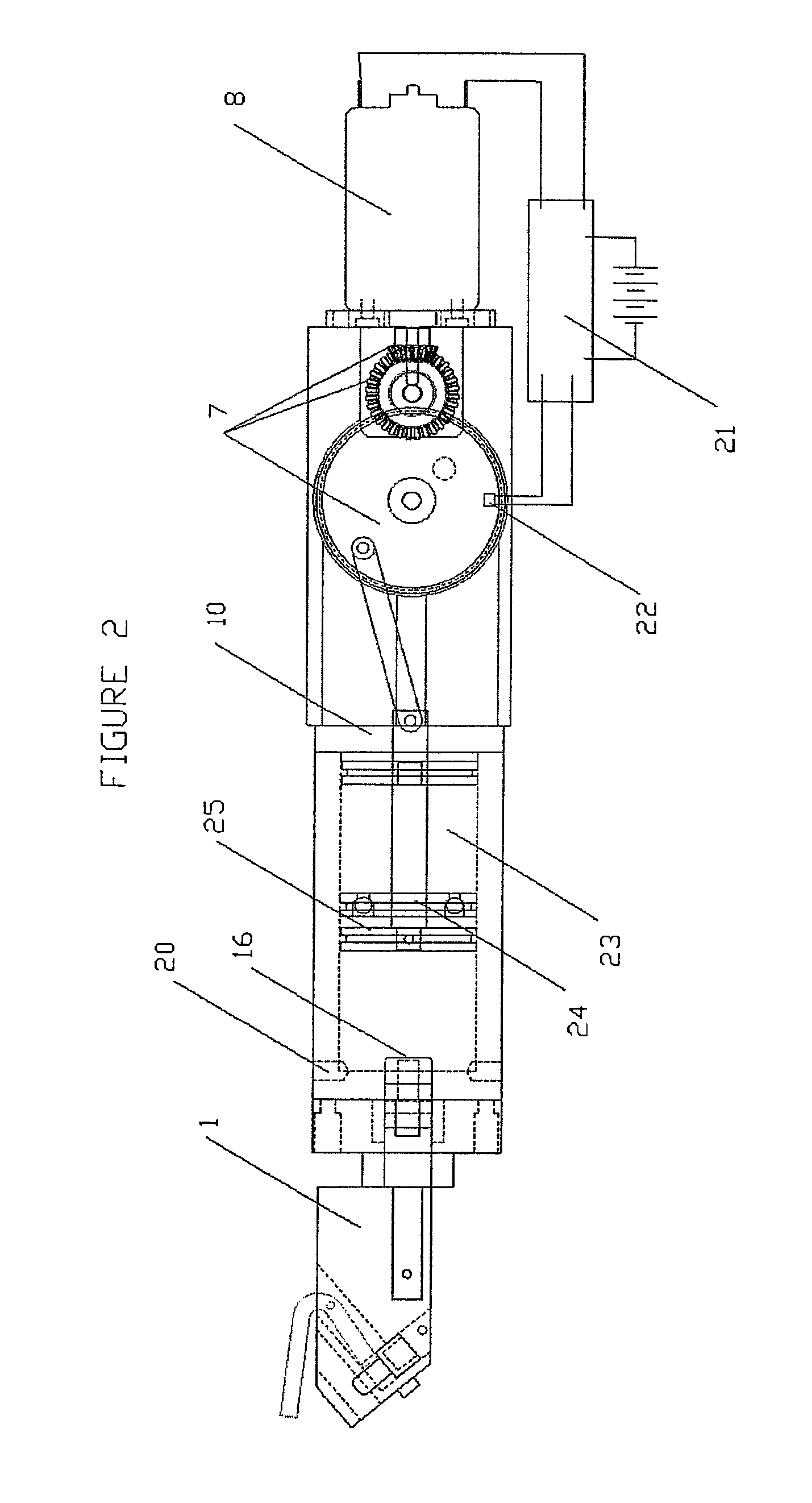Electric motor driven tool for orthopedic impacting
a technology of electric motors and tools, applied in the field of electric motor driven tools for orthopedic impacting, can solve the problems of surgeons suffering from fatigue in this approach, inability to accurately locate and configure the cavity, and clumsy and unpredictable approach, and achieve the effect of enhancing the skill of existing surgeons in guiding instruments and better fitting for prostheses or implants
- Summary
- Abstract
- Description
- Claims
- Application Information
AI Technical Summary
Benefits of technology
Problems solved by technology
Method used
Image
Examples
Embodiment Construction
[0030]The best mode for carrying out the present disclosure is presented in terms of its preferred embodiments, herein depicted in the accompanying figures. The preferred embodiments described herein detail for illustrative purposes are subject to many variations. It is understood that various omissions and substitutions of equivalents are contemplated as circumstances may suggest or render expedient, but are intended to cover the application or implementation without departing from the spirit or scope of the present disclosure.
[0031]The terms “a” and “an” herein do not denote a limitation of quantity, but rather denote the presence of at least one of the referenced items.
[0032]The present disclosure provides an electric motor-driven orthopedic impacting tool with controlled percussive impacts. The tool includes the capability to perform single and multiple impacts as well as impacting of variable and varying directions, forces and frequencies. In an embodiment the impact force is a...
PUM
| Property | Measurement | Unit |
|---|---|---|
| time | aaaaa | aaaaa |
| time | aaaaa | aaaaa |
| force | aaaaa | aaaaa |
Abstract
Description
Claims
Application Information
 Login to View More
Login to View More - R&D
- Intellectual Property
- Life Sciences
- Materials
- Tech Scout
- Unparalleled Data Quality
- Higher Quality Content
- 60% Fewer Hallucinations
Browse by: Latest US Patents, China's latest patents, Technical Efficacy Thesaurus, Application Domain, Technology Topic, Popular Technical Reports.
© 2025 PatSnap. All rights reserved.Legal|Privacy policy|Modern Slavery Act Transparency Statement|Sitemap|About US| Contact US: help@patsnap.com



